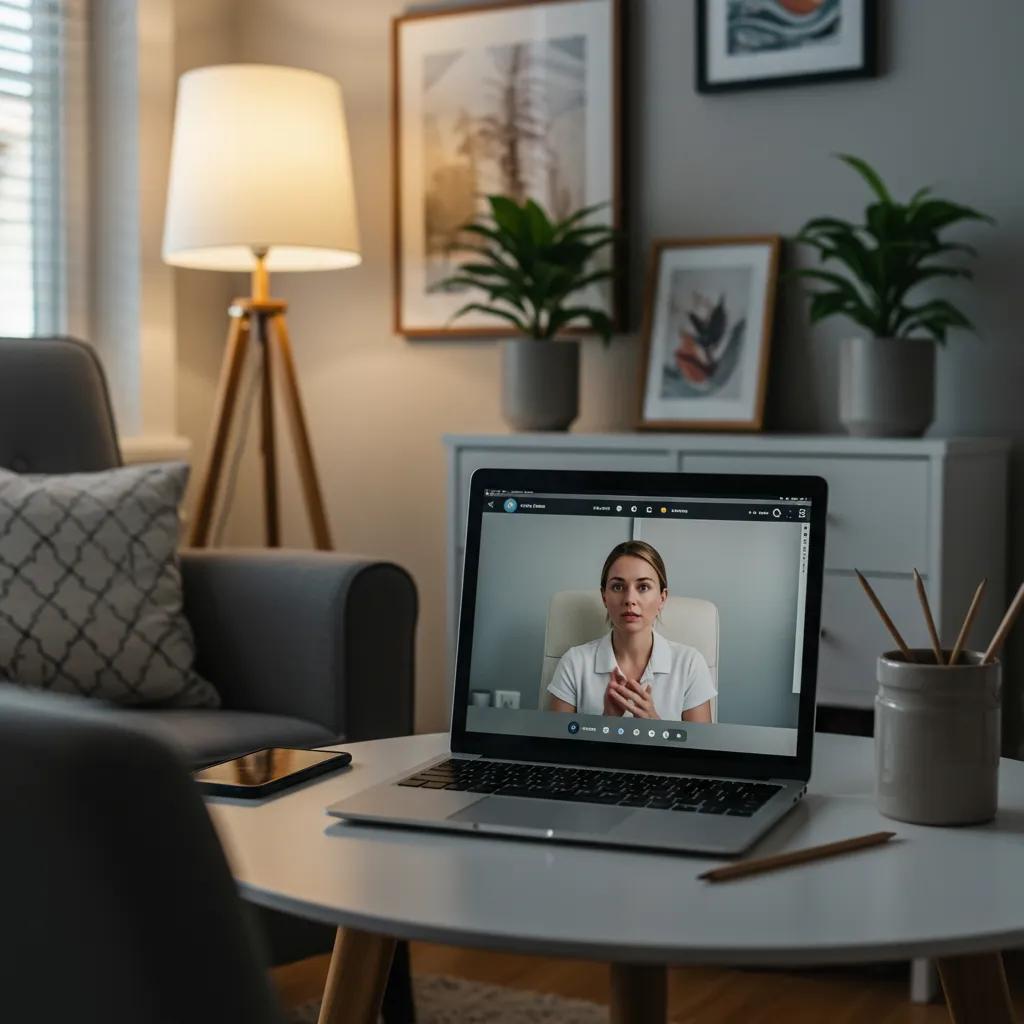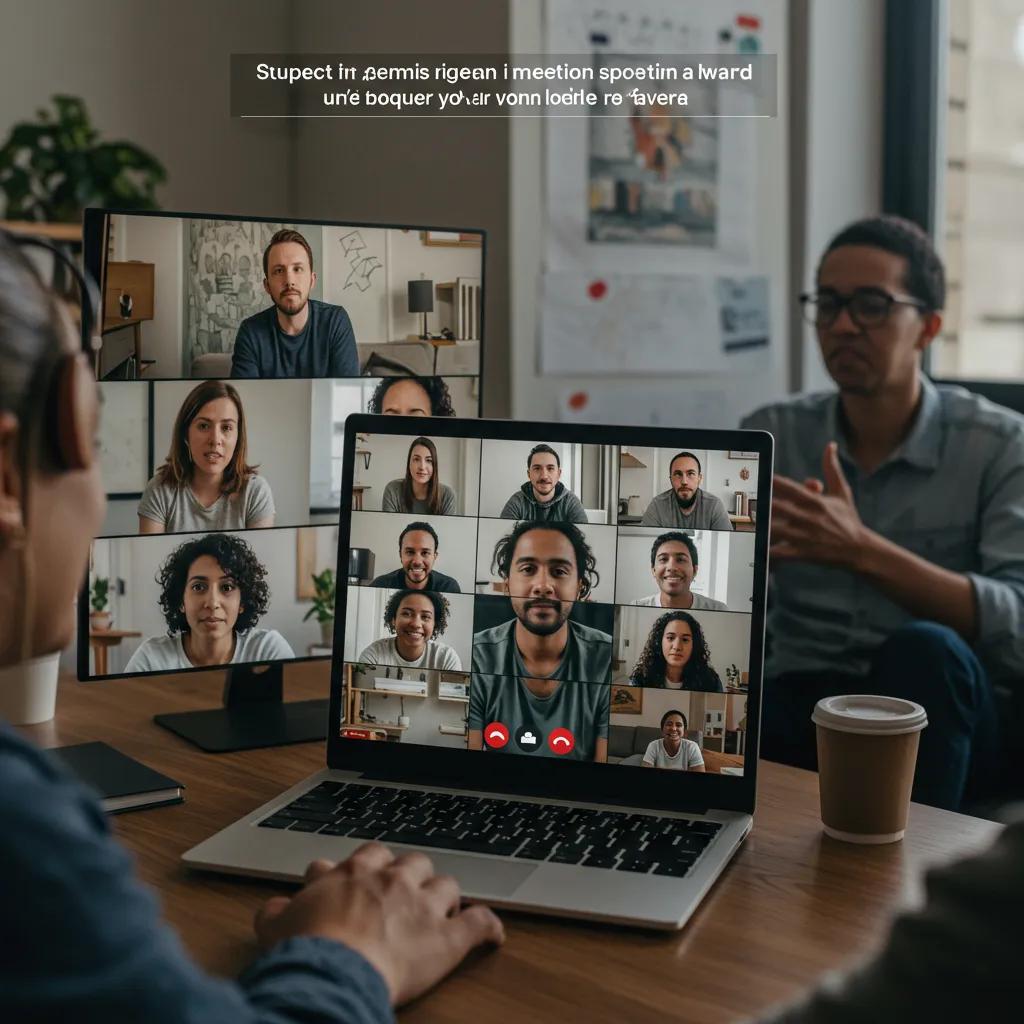
Virtual intensive outpatient programs (IOPs) deliver structured, evidence-based mental health care through telehealth platforms to support people who need more than weekly therapy but less than inpatient care. This guide explains what an online IOP mental health program is, how virtual intensive outpatient program delivery works, which conditions are treated, and why recent research through 2023–2025 indicates strong outcomes for many patients. Readers will learn how online IOPs adapt core therapies like CBT, DBT, and somatic approaches for remote group and individual work, practical steps for verifying insurance and cost, and how to choose programs that match demographic and clinical needs. The article maps program structure and delivery, compares virtual IOP to in-person options and PHP, and provides actionable intake and aftercare guidance to support long-term recovery. Throughout, keywords such as online IOP mental health, telehealth IOP, and virtual group therapy IOP are used in context to help practitioners, patients, and caregivers understand options and make informed decisions.
A virtual intensive outpatient program (IOP) for mental health is a structured telehealth service that provides multi-week, multi-session psychiatric and psychotherapy care without requiring inpatient admission, delivering group and individual therapy, skills training, and care coordination. This delivery model uses secure video platforms, scheduled group sessions, one-to-one teletherapy, and clinician-patient portals so that patients receive intensive supports while maintaining home, work, or school responsibilities. The primary benefit is sustained, coordinated treatment that targets moderate-to-severe conditions while preserving daily functioning, and virtual IOPs make that support accessible across geography. Eligibility typically follows referral from outpatient clinicians or step-down from higher levels of care, and the next section compares virtual IOP to in-person and standard outpatient therapy to clarify practical differences.
Online IOP differs from traditional in-person therapy by offering higher-frequency, structured programming via telehealth instead of occasional office-based individual sessions, combining group curricula and medication management remotely. The mechanism of difference lies in modality and intensity: virtual IOP increases hours per week and uses synchronous video groups to deliver skills training and peer support while preserving clinician oversight, which improves accessibility for patients with scheduling or transportation barriers. Outcomes research through recent years shows comparable symptom reduction and in some cases improved retention for telehealth IOP, though setting-specific factors like digital comfort and privacy influence results. Understanding these modality differences helps patients decide between virtual and in-person care based on accessibility, clinical needs, and personal preferences, which leads into the program’s core components next.

Core components of online IOP programs include group therapy, individual therapy, skills training (CBT/DBT modules), psychiatric medication management, case management, and family involvement delivered via telehealth. Each component serves a specific purpose: group therapy fosters peer learning and relapse-prevention skills, individual therapy addresses personalized goals and risk assessment, and medication management coordinates pharmacotherapy remotely with labs or local monitoring when needed. Typical virtual delivery uses scheduled video groups 2–5 times per week plus weekly individual sessions, digital workbooks, and secure messaging for between-session support. Mapping components to frequency clarifies expectations and prepares patients for the intake process described later.
A virtual IOP typically lasts anywhere from 4 to 12 weeks depending on clinical severity, goals, and progress, with common schedules delivering 9–15 hours of structured care per week through group and individual sessions. The mechanism for setting duration is individualized treatment planning driven by baseline assessment, symptom reduction metrics, and functional recovery benchmarks; many patients transition to standard outpatient therapy after meeting stabilization and skills criteria. Shorter programs focus on acute symptom stabilization and relapse prevention, while longer tracks emphasize deeper skills consolidation and co-occurring disorder management. Knowing typical lengths helps patients plan logistics and informs discussions with payors and referring clinicians about expected timeframes for care.
Virtual IOPs treat a broad range of conditions by tailoring curricula, group composition, and therapeutic focus to clinical needs while using telehealth to increase reach and continuity of care. Typical conditions addressed include major depression, generalized and social anxiety, trauma-related disorders including PTSD, substance use disorders with co-occurring mental health conditions, and complex mood disorders requiring structured behavioral interventions. Programs adapt evidence-based modules so that groups and individuals receive targeted interventions that match diagnostic presentations while maintaining safety protocols for higher-risk patients. The next subsections explain how common conditions—anxiety/depression, trauma/PTSD, and addiction with co-occurring disorders—are managed in virtual IOP settings.
Online IOP addresses anxiety and depression through structured CBT and behavioral activation modules delivered in group settings, supplemented by individual therapy for personalized cognitive restructuring and activity scheduling. The mechanism involves teaching skills for identifying cognitive distortions, practicing exposure and behavioral experiments, and assigning between-session digital homework to reinforce learning, which helps reduce symptoms over several weeks. Group sessions provide peer modeling and social reinforcement while individual sessions tailor pacing and comorbidity management, and clinicians monitor progress with standardized measures. These integrated approaches typically yield measurable improvement within 4–8 weeks, and the virtual format supports continuity when life obligations would otherwise interrupt care.
Virtual IOP can effectively treat trauma and PTSD by emphasizing stabilization, safety planning, and phased trauma-focused interventions adapted for remote delivery, such as prolonged exposure elements, cognitive processing techniques, and somatic stabilization exercises. Clinicians prioritize privacy, trauma-informed facilitation, and staggered exposure practices while leveraging secure platforms to maintain confidentiality and immediate crisis protocols when needed. Evidence from recent telehealth studies through 2023–2025 indicates that trauma-focused therapies delivered remotely can achieve comparable symptom relief to in-person care when fidelity and clinician training are maintained. These adaptations ensure that virtual IOPs remain clinically sound for trauma populations while preserving patient safety and therapeutic rapport.
Virtual versus In-Person Intensive Outpatient Program Outcomes: A 2023 Quantitative Study
ABSTRACT: Ballash, Barbara J. Capella University. ProQuest Dissertations & Theses, 2023. 30310069.
… to the COVID-19 Pandemic: A Quantitative Study Comparing Client Outcomes of In-Person and Adapted Virtual Services for an Intensive Outpatient Program, 2023

Online IOP plays a key role in integrated care for substance use disorders (SUDs) and co-occurring mental health conditions by combining relapse-prevention groups, motivational interviewing, medication-assisted treatment coordination, and behavioral therapies within a telehealth framework. The mechanism of integrated treatment links behavioral relapse-prevention skills taught in groups with individualized case management and remote medication supervision to address both cravings and underlying psychiatric symptoms. Programs often coordinate with local providers for lab monitoring and prescriptions while using secure messaging, digital check-ins, and peer-support groups to boost retention. Data trends show strong engagement in telehealth SUD programs, and keeping patients connected through virtual platforms improves continuity of care and reduces barriers to reaching evidence-based interventions.
Online IOP improves accessibility, continuity, and retention by removing geographic and logistical barriers while delivering the same evidence-based therapies used in-person, and recent research from 2023–2025 indicates comparable symptom reductions and patient satisfaction in many settings. The mechanism behind these benefits includes increased session attendance because patients avoid travel, better fit for work or school schedules, and the ability to assemble clinically appropriate groups across wider regions for better demographic matching. Patient-reported outcomes often show high satisfaction with convenience and perceived therapeutic alliance when platforms and clinician techniques support engagement. The following list summarizes primary benefits observed in contemporary practice and research.
Online IOP delivers several practical benefits and measurable outcomes:
These benefits explain why many patients and clinicians consider virtual IOPs a viable alternative to traditional in-person programs, and the next section provides a comparative EAV table to contrast virtual IOP, in-person IOP, and standard outpatient therapy.
Different treatment settings show distinct strengths and measurable attributes.
| Program Type | Typical Retention & Access | Evidence-based Components |
|---|---|---|
| Virtual IOP | Higher retention in many studies; improved geographic access | Group CBT/DBT, individual therapy, medication management via telehealth |
| In-person IOP | Strong group cohesion for some populations; requires travel | Same core therapies with in-person modalities and on-site monitoring |
| Standard Outpatient | Lower hours/week; easier scheduling but less intensity | Weekly individual therapy and as-needed referrals to groups |
An online IOP program is structured around a multidisciplinary clinical team delivering scheduled group therapy, individual sessions, medication management, case coordination, and family involvement using secure telehealth platforms to preserve privacy and therapeutic fidelity. The mechanism involves synchronous video groups for skills training, breakout rooms for small-group practice, digital worksheets for homework, and clinical dashboards for monitoring outcomes and risk, all coordinated by therapists, psychiatrists, and recovery-support staff. Security practices include encrypted platforms and clinician training in remote risk assessment to ensure safe care delivery, and the next subsections examine group roles, individual therapy, family integration, and how therapies are adapted for online use.
Group therapy in virtual IOP serves to teach skills, provide peer support, and practice behavioral experiments in a supervised environment using facilitator techniques optimized for telehealth. Facilitators use structured curricula, breakout rooms for skills rehearsal, and platform tools like screen-sharing and digital whiteboards to engage participants and maintain group cohesion. Typical group sizes range from 6–12 members for closed groups or slightly larger for open formats, and confidentiality norms and facilitator-led check-ins protect safety while encouraging sharing. Effective online groups foster accountability and normalize recovery experiences, which supports individual therapy goals that follow.
Individual therapy in online IOP focuses on assessment, personalized goal-setting, crisis planning, and integration of group-learned skills with one-on-one cognitive or behavioral interventions. Sessions typically occur weekly or biweekly depending on intensity, and clinicians coordinate with group facilitators to align treatment goals and homework assignments across modalities. Remote risk assessment protocols and safety planning are integrated into individual sessions to manage emergent concerns, including direct communication plans and local emergency contacts when needed. This individualized attention ensures that group curricula translate into meaningful, personalized change in daily functioning.
Family therapy and support in virtual IOPs include education sessions, conjoint therapy, and caregiver coaching delivered via secure video to involve support systems in treatment planning and relapse prevention. Integration requires informed consent, scheduling accommodations for multi-location participants, and attention to cultural and family dynamics to ensure sessions are safe and productive. Family involvement helps reinforce skills outside sessions and supports adherence to medication and aftercare plans, and clinicians often provide separate caregiver groups or resource modules to build structured support. Including family in treatment planning enhances continuity and reduces relapse risk after discharge.
Therapies like CBT, DBT, somatic experiencing, and mindfulness are adapted for online delivery by converting exercises into screen-shareable workbooks, guided in-session practices, and app-based homework that reinforce learning between sessions. For example, CBT uses digital thought records and shared whiteboards to practice cognitive restructuring, while DBT employs skills coaching through role-plays in breakout rooms and crisis skills check-ins via secure messaging. Somatic approaches prioritize stabilization techniques and clinician-guided body awareness exercises that translate to on-screen guided practice, with fidelity checks through recorded supervision and structured session notes. These adaptations preserve treatment mechanisms while leveraging telehealth features for engagement.
The program components below show typical frequency and virtual adaptations for core elements.
| Component | Frequency/Duration | Typical Virtual Adaptation |
|---|---|---|
| Group Therapy | 2–5 sessions/week, 60–120 minutes | Synchronous video with breakout rooms and digital curricula |
| Individual Therapy | Weekly 30–60 minutes | Teletherapy with shared digital worksheets and outcome tracking |
| Medication Management | 1–2 visits/month (or as needed) | Telepsychiatry visits coordinated with local labs when required |
| Family Sessions | 1–4 sessions during program | Scheduled tele-sessions with multi-location participation |
Practical considerations for online IOP include cost and insurance coverage, program quality criteria, intake logistics, and demographic-specific options that affect fit and accessibility. The mechanism of choosing the right program involves verifying licensure, evidence-base, crisis protocols, and platform security, plus confirming payor arrangements and potential out-of-pocket costs. To help evaluate options, the subsections provide an insurance cost comparison, stepwise selection criteria, intake checklist, and guidance on demographic tailoring for young adults or professionals.
Costs for online IOP vary by intensity, clinician mix, duration, and payor arrangements; many programs accept in-network insurance, offer out-of-network reimbursement, or provide self-pay options with sliding-scale availability. The typical verification steps include confirming medical necessity criteria, checking in-network status, asking about session units and billing codes, and requesting pre-authorization when required by the payor. Patients should ask specific questions to payors: whether telehealth IOP is covered, what documentation is needed, and how medication management visits are billed. The table below compares payment options and action steps to take during verification.
Insurance and payment options vary; use this table to guide verification calls.
| Payment Option | Typical Coverage Considerations | Action Steps / Questions to Ask |
|---|---|---|
| In-network | Often covers IOP when medically necessary; pre-auth may be required | Ask about specific CPT/HCPCS codes and pre-authorization requirements |
| Out-of-network | May reimburse a portion; patient pays upfront and files claims | Request reimbursement rates and required documentation from provider |
| Self-pay | Flexible scheduling without insurance limits; cost varies by program | Ask for itemized fee schedule and sliding-scale availability |
| Sliding scale / grants | Limited availability; eligibility criteria apply | Inquire about application process and income verification needs |
Choosing the right online IOP requires evaluating clinical modalities (CBT/DBT availability), clinician credentials and licensure, measurable outcomes, crisis management protocols, and technology/security practices to ensure fit and safety. A stepwise checklist should include verifying the program’s evidence-based practices, asking for outcome data or retention metrics, confirming clinician licensure across state lines if applicable, and requesting details on emergency procedures. Sample interview questions include: “How do you handle crises remotely?” and “What measures of improvement do you track during treatment?” Prioritizing these criteria helps match clinical needs and logistical constraints to the appropriate program model. Clear answers from a prospective program should lead into the intake process described next.
Getting started with an online IOP typically involves referral or self-referral, clinical intake assessment, insurance verification, technology setup, and an orientation session detailing schedules and expectations. The intake assessment evaluates diagnosis, risk level, medication needs, and social supports, which informs placement in the appropriate group and duration recommendation. Prior to the first session, patients should test their video platform, arrange private space, and complete any digital paperwork to streamline the first week. Preparing documentation and completing a tech check reduces barriers and increases the likelihood of immediate engagement during the program’s initial phase.
Yes—many virtual IOPs offer demographic-specific tracks that tailor scheduling, group composition, and content for young adults, college students, working professionals, and other populations requiring privacy or flexible hours. Program features for these groups may include evening sessions for professionals, campus-compatible schedules for students, or affinity groups for identity-specific needs that foster peer relevance and trust. When searching, use targeted search terms like “young adult virtual IOP” or “professional-friendly telehealth IOP” and ask programs about cultural competence training and confidentiality measures. Demographic tailoring helps align therapeutic content and logistics to life-stage demands, improving engagement and outcomes.
Common questions about online IOP focus on effectiveness, scheduling flexibility, and distinctions from higher-intensity programs like partial hospitalization; concise answers help users quickly assess fit. The mechanism for addressing these questions combines evidence summaries with practical implications so patients understand trade-offs and can make informed choices. The following H3 answers provide short, evidence-informed responses to top queries that patients and providers raise when considering virtual IOP.
Recent studies and practice reviews from 2023–2025 indicate that virtual IOP can be as effective as in-person treatment for many diagnostic groups when evidence-based therapies are delivered with fidelity and clinicians are trained in telehealth techniques. The key mechanism is preserving therapy structure—group curricula, individual treatment plans, and medication oversight—while using telehealth tools to maintain engagement; retention and symptom reduction metrics often show parity. Caveats include populations with acute medical instability or high immediate risk that may require in-person monitoring, and patients should weigh these factors when choosing modality. Practical takeaway: virtual IOP is a robust option for many, but assess individual risk and monitoring needs before enrolling.
Virtual versus In-Person Intensive Outpatient Program Outcomes: A 2023 Quantitative Study
ABSTRACT: Ballash, Barbara J. Capella University. ProQuest Dissertations & Theses, 2023. 30310069.
… to the COVID-19 Pandemic: A Quantitative Study Comparing Client Outcomes of In-Person and Adapted Virtual Services for an Intensive Outpatient Program, 2023
Yes—online IOPs are designed to accommodate work or academic commitments by offering flexible schedules (evening or partial-day groups), asynchronous resources, and planning for employer or school communication as needed for leave or schedule adjustments. Time-management strategies include blocking calendar time for sessions, arranging private space for confidentiality, and coordinating with supervisors for minimal disclosure that preserves treatment privacy. Programs often advise on workplace accommodations and may provide documentation for medically necessary time off when appropriate. These practical arrangements enable participation without sacrificing employment or academic progress.
Virtual IOP and partial hospitalization programs (PHP) differ mainly in intensity and monitoring: PHP typically requires full-day participation with higher clinician-to-patient ratios and on-site monitoring, while IOP provides fewer weekly hours and allows patients to return home each day. The mechanism behind this distinction is acuity: PHP suits higher medical or safety risk requiring close supervision, whereas IOP targets stabilization and skills-building for patients who can maintain safety outside program hours. Transition pathways exist between PHP, IOP, and standard outpatient care based on progress and risk assessments. Understanding these intensity differences helps determine the most appropriate level of care.
Online IOP supports long-term recovery by integrating recovery coaching, continuing care plans, booster sessions, and technology-enabled aftercare to sustain gains made during the program and reduce relapse risk. The mechanism links structured in-program skills training with ongoing supports—apps for homework, periodic group check-ins, and recovery coach outreach—to maintain accountability and access to resources. Programs track measurable outcomes like symptom scales and 30/90-day retention to evaluate long-term effectiveness and adjust aftercare intensity as needed. The subsections below describe roles of coaches and clinicians, engagement strategies, and anonymized success vignettes illustrating measurable recovery pathways.
Recovery coaches and clinicians collaborate in virtual IOP teams where clinicians provide diagnosis-driven therapy and medication oversight while coaches deliver practical support, care navigation, and motivation strategies to increase engagement and follow-through. Coaches often perform outreach between sessions, help with appointment adherence, and reinforce skills homework, which complements clinician-driven interventions and improves retention. Clear communication loops, shared care plans, and coordinated documentation ensure clinical oversight while leveraging coaches for non-clinical engagement tasks. This blended model strengthens continuity and helps patients transition smoothly into maintenance care after discharge.
Online IOP fosters engagement through scheduled reminders, interactive session formats, small-group models, digital homework tracking, and recovery-coach follow-ups that maintain momentum between sessions. Interactive elements—screen sharing, polls, and breakouts—turn passive viewing into practiced skills, while asynchronous resources support rehearsal, creating a sustained learning loop. Retention metrics from contemporary telehealth programs demonstrate improved attendance in many cohorts when these tactics are implemented reliably. Programs use structured outreach and data-informed re-engagement plans to reduce drop-out and support sustained recovery.
Anonymized case vignettes illustrate how integrated virtual IOP interventions produce measurable outcomes: one adult with major depression engaged in a 10-week virtual DBT/CBT track, completed digital behavioral activation assignments, and showed a 50% reduction in symptom scores with return-to-work; another young adult in SUD-focused IOP combined telepsychiatry for medication and relapse-prevention groups and sustained 90-day abstinence with strong peer support. These vignettes show the mechanism—skill acquisition plus coordinated aftercare—leading to improved functioning and retention, though generalizability varies by population and program fidelity. Such examples highlight how virtual IOP components work together to support durable recovery when programs maintain evidence-based practice.
Following these steps increases the likelihood of a smooth start and better engagement in online IOP programs.
This article has provided a full guide to virtual intensive outpatient programs—defining what they are, who they help, how they work, practical steps for access, and how they support sustained recovery through coordinated telehealth delivery.
We are 100% in Network Provider. Most of our clients pay $0 out of pocket.



